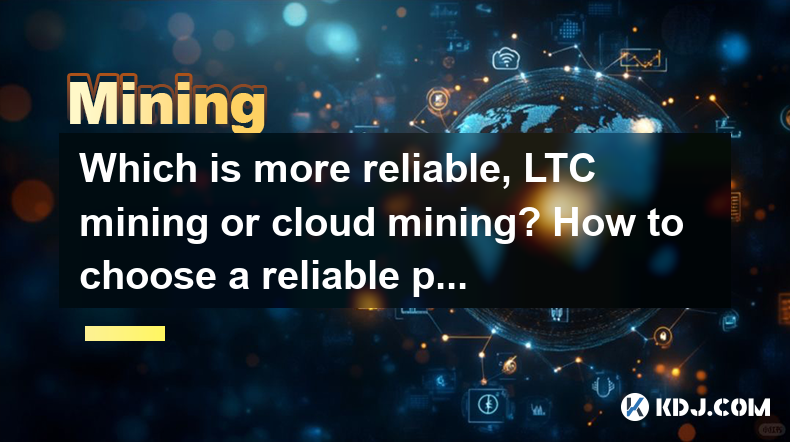-
 Bitcoin
Bitcoin $113900
-1.39% -
 Ethereum
Ethereum $3517
-4.15% -
 XRP
XRP $3.009
1.59% -
 Tether USDt
Tether USDt $0.9997
-0.04% -
 BNB
BNB $766.8
-1.41% -
 Solana
Solana $164.6
-2.38% -
 USDC
USDC $0.9998
-0.02% -
 TRON
TRON $0.3277
0.65% -
 Dogecoin
Dogecoin $0.2023
-1.67% -
 Cardano
Cardano $0.7246
0.05% -
 Hyperliquid
Hyperliquid $38.27
-4.77% -
 Sui
Sui $3.528
-0.52% -
 Stellar
Stellar $0.3890
-0.73% -
 Chainlink
Chainlink $16.16
-2.69% -
 Bitcoin Cash
Bitcoin Cash $539.9
-4.38% -
 Hedera
Hedera $0.2425
-2.00% -
 Avalanche
Avalanche $21.71
-0.97% -
 Toncoin
Toncoin $3.662
5.73% -
 Ethena USDe
Ethena USDe $1.000
-0.02% -
 UNUS SED LEO
UNUS SED LEO $8.964
0.35% -
 Litecoin
Litecoin $107.7
2.33% -
 Shiba Inu
Shiba Inu $0.00001223
-0.40% -
 Polkadot
Polkadot $3.617
-0.97% -
 Uniswap
Uniswap $9.052
-2.49% -
 Monero
Monero $295.1
-3.79% -
 Dai
Dai $0.9999
0.00% -
 Bitget Token
Bitget Token $4.315
-1.85% -
 Pepe
Pepe $0.00001060
0.11% -
 Cronos
Cronos $0.1342
-2.72% -
 Aave
Aave $256.0
-0.87%
Which is more reliable, LTC mining or cloud mining? How to choose a reliable platform?
LTC mining offers control but requires hardware investment, while cloud mining is less costly but riskier due to potential unreliable providers.
May 03, 2025 at 03:29 am

Introduction to LTC and Cloud Mining
LTC, or Litecoin, is a popular cryptocurrency that was created in 2011 as an alternative to Bitcoin. It is often referred to as the "silver to Bitcoin's gold" due to its faster transaction times and different hashing algorithm. Mining LTC involves using specialized hardware to solve complex mathematical problems, which in turn validates transactions and adds them to the Litecoin blockchain. On the other hand, cloud mining allows individuals to rent computing power from remote data centers to mine cryptocurrencies without the need for personal hardware.
Reliability of LTC Mining
When it comes to LTC mining, the reliability can be assessed based on several factors. Firstly, the hardware used for mining plays a crucial role. ASIC miners, which are specifically designed for cryptocurrency mining, are more reliable than GPUs or CPUs because they are more efficient and have a higher hash rate. Secondly, the cost of electricity is a significant factor. If the electricity cost is high, the profitability of mining can be significantly reduced, affecting the reliability of the operation. Lastly, the stability of the Litecoin network itself is important. Litecoin has a well-established network, which adds to the reliability of mining this cryptocurrency.
Reliability of Cloud Mining
Cloud mining offers a different set of reliability factors. Firstly, the reliability of the cloud mining provider is paramount. Not all cloud mining platforms are trustworthy, and some may be outright scams. Secondly, the contract terms and conditions can affect reliability. Some contracts may promise high returns but come with hidden fees or clauses that make it difficult to withdraw profits. Lastly, the performance of the rented mining equipment is crucial. If the provider does not maintain their hardware properly, the mining efficiency can decrease, affecting the reliability of the service.
Comparing LTC Mining and Cloud Mining
When comparing LTC mining and cloud mining, several aspects need to be considered. LTC mining offers more control over the mining process, as you own the hardware and can decide when to start or stop mining. However, it requires a significant upfront investment in hardware and ongoing electricity costs. Cloud mining, on the other hand, requires less initial investment but comes with the risk of unreliable providers. The choice between the two often depends on your level of technical expertise, financial resources, and risk tolerance.
How to Choose a Reliable Platform for LTC Mining
Choosing a reliable platform for LTC mining involves several steps:
- Research the hardware: Look for reputable brands of ASIC miners that are known for their reliability and efficiency. Brands like Bitmain and Innosilicon are well-regarded in the industry.
- Calculate costs: Use online calculators to determine the profitability of mining based on your electricity rates and the current price of Litecoin. Ensure that the cost of electricity does not outweigh the potential profits.
- Join a mining pool: Joining a reputable mining pool can increase the reliability of your mining operation by spreading the risk and ensuring more consistent payouts. Popular pools include Antpool and F2Pool.
- Monitor performance: Regularly monitor the performance of your mining hardware to ensure it is operating efficiently. Use software like CGMiner or EasyMiner to track hash rates and temperatures.
How to Choose a Reliable Platform for Cloud Mining
Selecting a reliable platform for cloud mining involves a different set of considerations:
- Research the provider: Look for providers with a good reputation and a long history of operation. Platforms like Genesis Mining and Hashflare are often recommended by the crypto community.
- Read reviews and testimonials: Look for independent reviews and testimonials from other users to gauge the reliability of the platform. Be wary of overly positive reviews, as they may be fake.
- Understand the contract: Carefully read the terms and conditions of the mining contract. Look for any hidden fees or clauses that may affect your ability to withdraw profits.
- Check the transparency: Reliable platforms will provide detailed information about their mining operations, including the type of hardware used and the location of their data centers.
Practical Steps for Setting Up LTC Mining
To set up LTC mining, follow these steps:
- Purchase the hardware: Buy a reputable ASIC miner designed for Litecoin mining. Ensure it is compatible with the Litecoin network.
- Set up the hardware: Follow the manufacturer's instructions to set up the miner. This usually involves connecting it to power and a network.
- Install mining software: Download and install mining software like CGMiner or EasyMiner. Configure the software to connect to your chosen mining pool.
- Join a mining pool: Register with a mining pool and enter your wallet address. Configure your mining software to connect to the pool's server.
- Start mining: Once everything is set up, start the mining process. Monitor the performance and adjust settings as needed to optimize efficiency.
Practical Steps for Setting Up Cloud Mining
To set up cloud mining, follow these steps:
- Choose a provider: Select a reputable cloud mining provider based on your research.
- Select a contract: Choose a mining contract that fits your budget and expected returns. Read the terms and conditions carefully.
- Make a payment: Pay for the contract using the provider's preferred payment method, which is often Bitcoin or another cryptocurrency.
- Set up your account: Create an account on the provider's platform and link your cryptocurrency wallet for withdrawals.
- Monitor your mining: Regularly check the performance of your cloud mining contract. Ensure that the provider is delivering the promised hash rate and that you are receiving your expected profits.
Frequently Asked Questions
Q: Can I mine LTC with a GPU or CPU?
A: While it is technically possible to mine LTC with a GPU or CPU, it is not recommended due to the low hash rates and high electricity costs. ASIC miners are much more efficient and profitable for Litecoin mining.
Q: Are there any risks associated with cloud mining?
A: Yes, there are several risks associated with cloud mining, including the potential for scams, hidden fees, and unreliable providers. It is crucial to thoroughly research any cloud mining platform before investing.
Q: How long does it take to start seeing profits from LTC mining?
A: The time it takes to start seeing profits from LTC mining can vary based on several factors, including the efficiency of your hardware, the cost of electricity, and the current price of Litecoin. Generally, it can take several months to break even and start seeing profits.
Q: Can I switch between different cryptocurrencies with cloud mining contracts?
A: Some cloud mining providers offer contracts that allow you to switch between different cryptocurrencies, but this is not always the case. It is important to check the terms of the contract to see if this option is available.
Disclaimer:info@kdj.com
The information provided is not trading advice. kdj.com does not assume any responsibility for any investments made based on the information provided in this article. Cryptocurrencies are highly volatile and it is highly recommended that you invest with caution after thorough research!
If you believe that the content used on this website infringes your copyright, please contact us immediately (info@kdj.com) and we will delete it promptly.
- Solana, Axiom Exchange, and Revenue: Navigating the Future of DeFi
- 2025-08-02 12:50:12
- Cardano (ADA) and Altcoin Gains: Navigating the Crypto Landscape
- 2025-08-02 12:55:11
- Bitcoin's Bearish Momentum: Fakeout or the Real Deal?
- 2025-08-02 12:30:12
- Ethereum's Rocky Climb: Analysts Eye New ATH Despite Recent Dip
- 2025-08-02 10:30:11
- Ethereum Price, ETF Inflows, and ETH Tokens: What's Driving the Market?
- 2025-08-02 10:50:12
- Ethereum, ADA, and Price Support: What's Next for These Crypto Titans?
- 2025-08-02 10:50:12
Related knowledge

What was the highest APY for IRON mining?
Jul 23,2025 at 05:14am
Understanding IRON Token and Its Mining MechanismThe IRON token is a stablecoin that operates within the Iron Finance ecosystem, primarily on blockcha...

What is impermanent loss in IRON pools?
Jul 23,2025 at 09:00am
Understanding Impermanent Loss in the Context of IRON PoolsImpermanent loss is a phenomenon that affects liquidity providers in decentralized finance ...

How to claim rewards from IRON mining?
Jul 23,2025 at 02:21pm
Understanding IRON Mining and Reward MechanismsIRON Finance operated as a decentralized finance (DeFi) protocol on the Polygon and Binance Smart Chain...

How to claim rewards from IRON mining?
Jul 29,2025 at 05:07am
Understanding IRON Mining and Reward MechanismIRON is a dual-token system designed to stabilize the value of a synthetic asset through a combination o...

IRON mining tutorial for beginners
Jul 27,2025 at 12:01am
What Is IRON and How Does It Work in the Cryptocurrency Ecosystem?IRON is a cryptocurrency token that operates on the Binance Smart Chain (BSC) and is...

How to calculate APY for IRON mining?
Jul 28,2025 at 09:49am
Understanding APY in the Context of IRON Token MiningWhen engaging in IRON token mining within decentralized finance (DeFi) platforms, Annual Percenta...

What was the highest APY for IRON mining?
Jul 23,2025 at 05:14am
Understanding IRON Token and Its Mining MechanismThe IRON token is a stablecoin that operates within the Iron Finance ecosystem, primarily on blockcha...

What is impermanent loss in IRON pools?
Jul 23,2025 at 09:00am
Understanding Impermanent Loss in the Context of IRON PoolsImpermanent loss is a phenomenon that affects liquidity providers in decentralized finance ...

How to claim rewards from IRON mining?
Jul 23,2025 at 02:21pm
Understanding IRON Mining and Reward MechanismsIRON Finance operated as a decentralized finance (DeFi) protocol on the Polygon and Binance Smart Chain...

How to claim rewards from IRON mining?
Jul 29,2025 at 05:07am
Understanding IRON Mining and Reward MechanismIRON is a dual-token system designed to stabilize the value of a synthetic asset through a combination o...

IRON mining tutorial for beginners
Jul 27,2025 at 12:01am
What Is IRON and How Does It Work in the Cryptocurrency Ecosystem?IRON is a cryptocurrency token that operates on the Binance Smart Chain (BSC) and is...

How to calculate APY for IRON mining?
Jul 28,2025 at 09:49am
Understanding APY in the Context of IRON Token MiningWhen engaging in IRON token mining within decentralized finance (DeFi) platforms, Annual Percenta...
See all articles

























































































